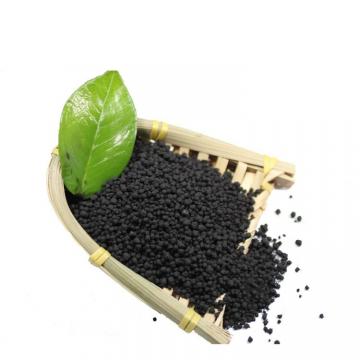The effect and function of humic acid on pesticides can achieve solubilization and efficiency enhancement, degradation of pesticides and reduction of pesticide toxicity. The effect and function of these humic acids are undoubtedly of great significance to the development of ecological agriculture. (These effects have been discussed in detail in the articles “Explain in detail the effect of humic acid products on pesticides.” Click on the text link to view) In addition, the mechanism involved in the effect and function in the field of pesticides also needs to be understood, the author will discuss this in detail in the following content:
To study the mechanism of action between pesticides and humic acid, domestic and foreign data have reported that the results obtained from different angles and using different technical means are not the same.
But it all shows that humic acid has a high potential adsorption capacity for pesticides. The specific research conclusions are as follows:
(1) There are ionic bonds and hydrogen bonds between triazine and humic acid. Humic acid will strongly adsorb pesticide 2.4.5-T from the solution.

(2) Studies on the adsorption and desorption of the herbicide trifluralin and soil humic acid show that the nature of humic acid is the key factor.
(3) The law of adsorption of simazine by humic acid shows that the adsorption properties of soil, lignite, oxidized lignite humic acid and peat and saprolite humate are the same. Humic acid is better than humate salt, soil humate salt has the highest capacity, and saprolite humate has the lowest adsorption capacity. It is equally important for simazine during the reaction process, proton transfer, laser intensity and hydrogen bond association.

(4) For the reaction of s-triazine and humic acid, a strong electron transfer reaction occurs. Therefore, it is considered that the complexation of s-triazine and humic acid, the high acidic functional group content of humic acid and the low alkalinity of s-triazine. It is beneficial to the proton transfer reaction, and vice versa, it is beneficial to the electron transfer reaction.
In addition, early monographs summarized the effects of temperature and pH on the interaction between pesticides and humic acid.
It is believed that the adsorption of pesticides by humic acid is greatly affected by temperature.
It is pointed out that the adsorption of atrazine on humic acid is increased by the increase of temperature, the amount of atrazine adsorbed by humic acid is about 10 times higher at low pH than at high pH. Other tests have shown that different pesticides are most adsorbed by humic acid at pH levels near their respective PK values.

In short, different explanations for the interaction between the above-mentioned pesticides and humic acid, whether it can be attributed to the mechanism of organic chemicals being humic acid is limited to the complexity of humic acid itself and the different types of various pesticide.
Someone pointed out early that, before sufficient the chemical structure of humic acid was available, these phenomena were not enough to explain the adsorption mechanism of agricultural organic chemicals by humic acid. Nevertheless, some concepts of some adsorption mechanism can be obtained from the above experimental studies.
It seems that it mainly includes hydrogen bonding and ion exchange, and other mechanism concepts. Such as physical adsorption, charge transfer, coordination exchange, and chemical adsorption also exist at the same time. For humic acid itself, consideration should also be given to the effect of the long-chain structure of fat on the adsorption of pesticides.
The above is the author’s discussion on the effect and function of humic acid products in the field of pesticides, may this article benefit you.





